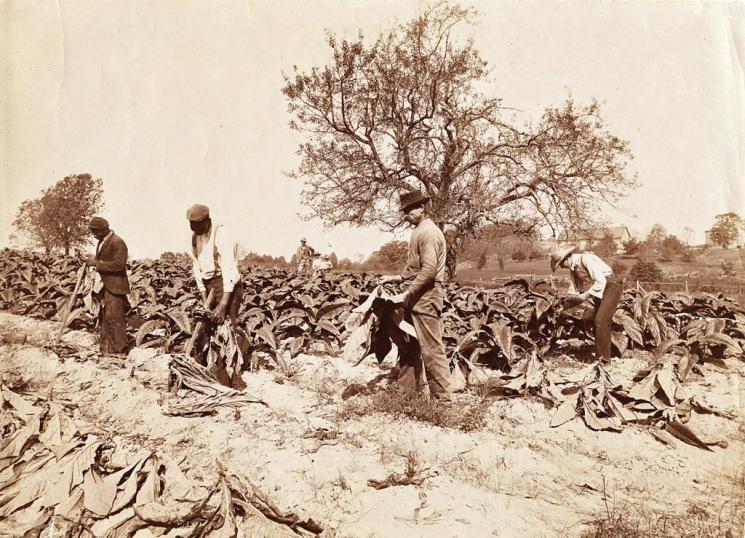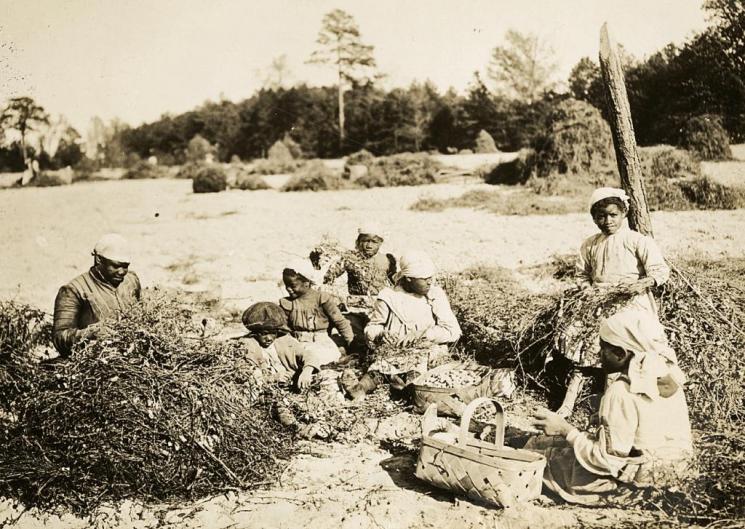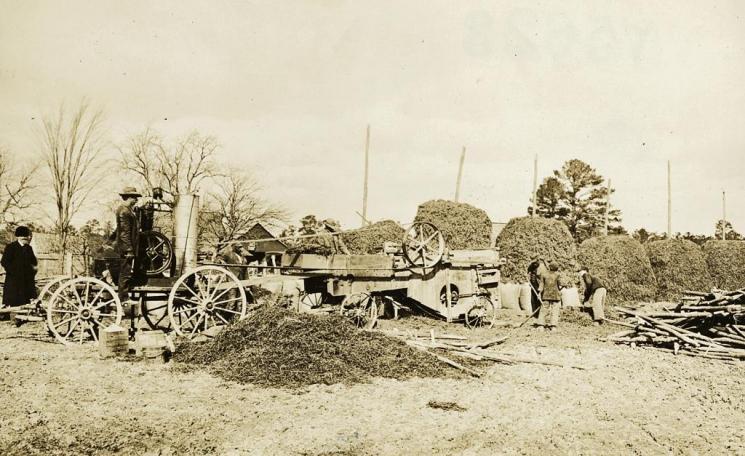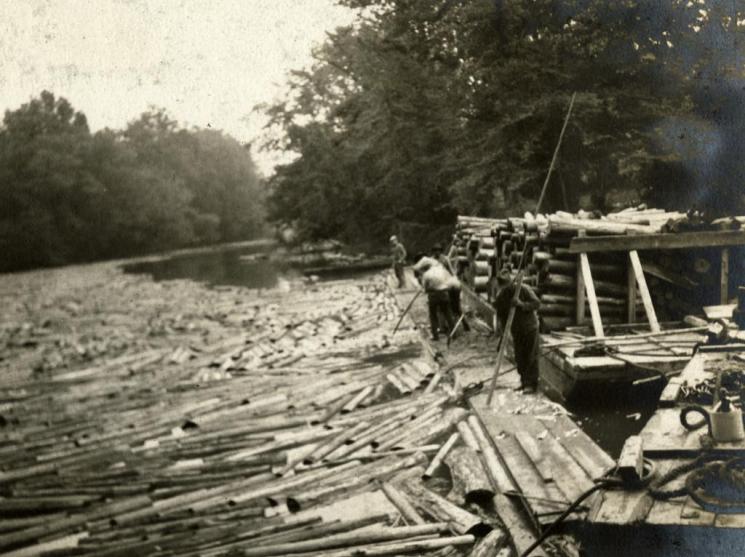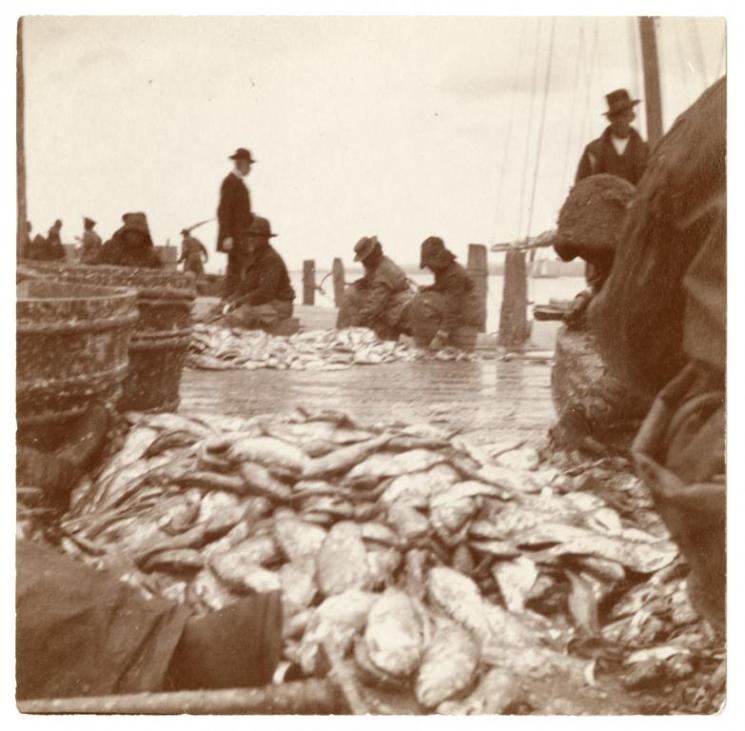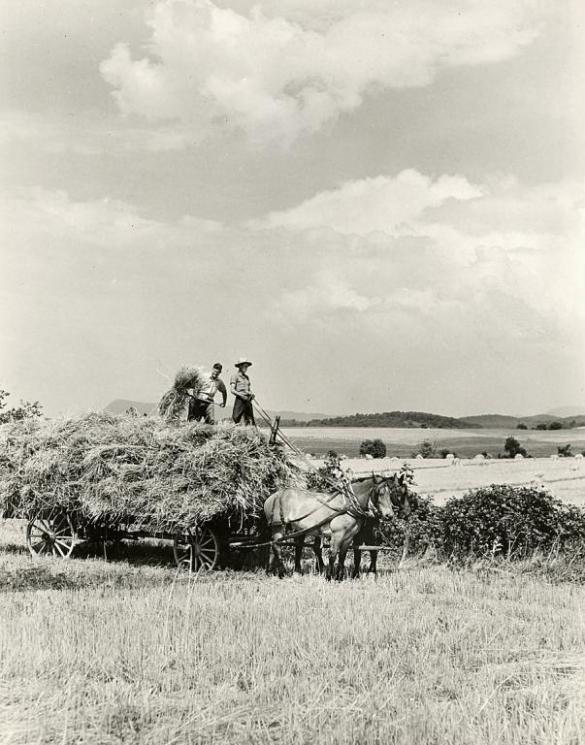Rural Life
Rural Life
What do you see in each photograph? Click on each image to enlarge it and see more detail. You may also click on the blue "i" in the corner of each image to read a description, or caption, of the photograph. Do you ever write descriptions about the photos you take? What information do you like to include? Some images will have more information in the caption than others. Why do you think this is?
Learn more about rural life in Virginia.
Cutting Tobacco, Southside Virginia, c. 1900
- What do you think this picture shows? What makes you say that?
- How does this picture make you feel? Why do you say that?
- Cover half the picture. How does this change what the picture is about?
- Look closely at the second man from the left. What do you think he is going to do next?
- If you could see to the left or right of the picture, what do you think you would see?
- When do you think this picture was taken? What makes you say that?
Digging and picking peanuts by hand
- What does this picture show? What makes you say that?
- How are the people dressed?
- Is this picture happy or sad? What makes you say that?
- What do you think is missing from this picture?
- Compare this picture with the picture of cutting tobacco. In what ways is it the same? In what ways is it different?
- Complete this sentence. "Once all the peanuts are picked, these children will . . ."
Digging and picking peanuts by machine
- How many people are in this picture?
- Describe what you think is happening in the picture.
- What might the people in this picture be saying?
- Who do you think is the most important person in the picture? Why do you say that?
- Compare this picture with the picture of picking peanuts by hand. How are the pictures different? How are they the same?
- Think of three ways to complete the following statement. "Because the farmer bought a machine to pick peanuts, . . ."
Lumbering, western Virginia, c. 1922
- What does this picture show? Why do you say that?
- Describe how these men work. Why do you think their poles are so long?
- What do you think happened just before the photograph was taken? What do you think is happening outside the frame of the picture?
- What do you think the logs will be used for? Why do you think they are in a river?
- Do you think this job is dangerous? Why or why not?
- Do you think you would see people doing this work today? Why or why not?
Fish
- Estimate the number of people in the picture. What are they doing?
- Who do you think is the most important person in the picture? What makes you say that?
- List 3 to 5 ways these fish might be used.
- What do you think will happen next?
- Where do you think this picture was taken? What makes you say that?
- What do you think might happen to the people if there were fewer fish?
Hay wagon, Shenandoah Valley, 1932
- How many men are in the picture?
- What are the men doing?
- These men are farmers. Do you think they have a big farm or a small farm? Why do you think that?
- Which man do you think is the more important? Why do you think that?
- Think of three things that might happen that would make this job more difficult.
- What machines can you think of that would make the farmer's job easier? What do you think would happen if these farmers purchased one of those machines?

